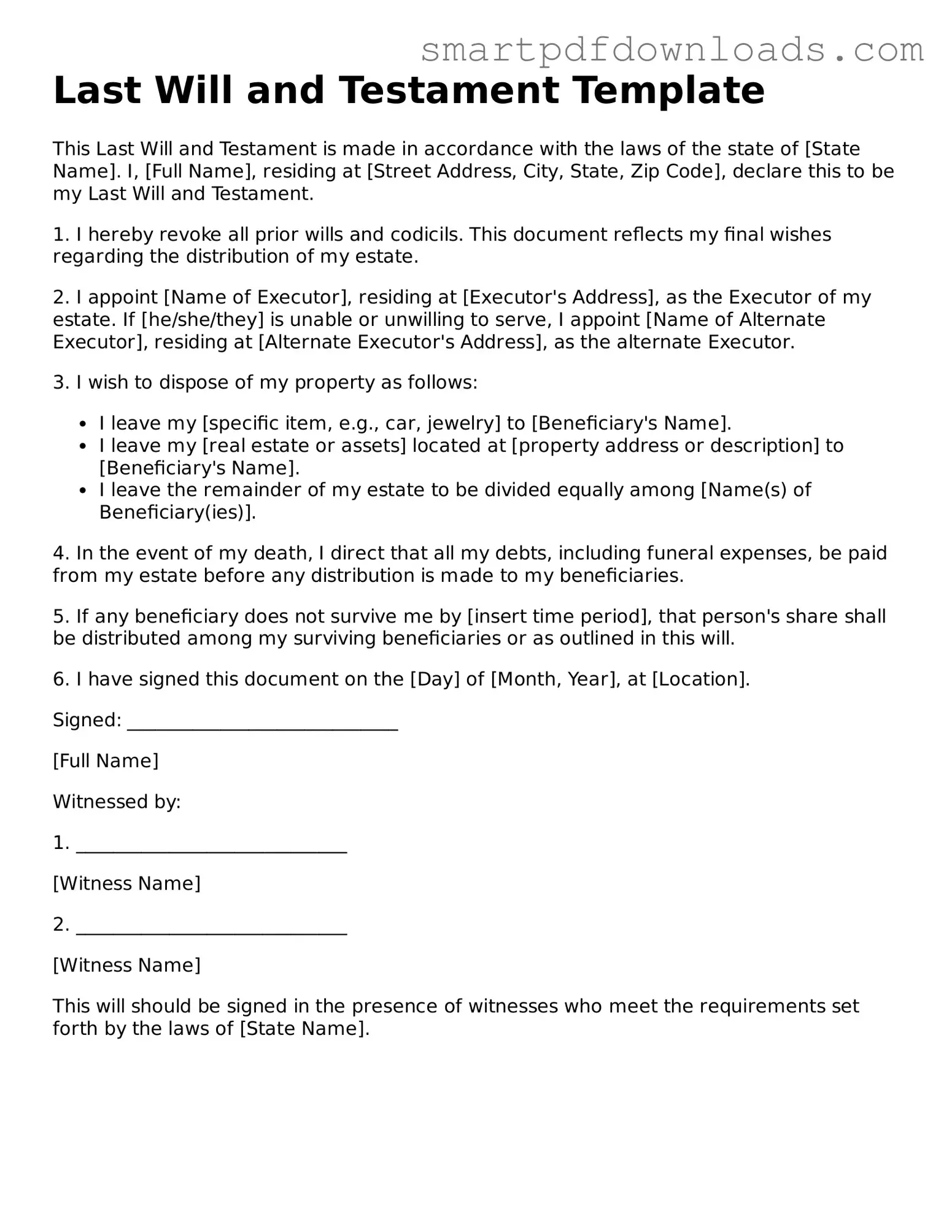Last Will and Testament Template
This Last Will and Testament is made in accordance with the laws of the state of [State Name]. I, [Full Name], residing at [Street Address, City, State, Zip Code], declare this to be my Last Will and Testament.
1. I hereby revoke all prior wills and codicils. This document reflects my final wishes regarding the distribution of my estate.
2. I appoint [Name of Executor], residing at [Executor's Address], as the Executor of my estate. If [he/she/they] is unable or unwilling to serve, I appoint [Name of Alternate Executor], residing at [Alternate Executor's Address], as the alternate Executor.
3. I wish to dispose of my property as follows:
- I leave my [specific item, e.g., car, jewelry] to [Beneficiary's Name].
- I leave my [real estate or assets] located at [property address or description] to [Beneficiary's Name].
- I leave the remainder of my estate to be divided equally among [Name(s) of Beneficiary(ies)].
4. In the event of my death, I direct that all my debts, including funeral expenses, be paid from my estate before any distribution is made to my beneficiaries.
5. If any beneficiary does not survive me by [insert time period], that person's share shall be distributed among my surviving beneficiaries or as outlined in this will.
6. I have signed this document on the [Day] of [Month, Year], at [Location].
Signed: _____________________________
[Full Name]
Witnessed by:
1. _____________________________
[Witness Name]
2. _____________________________
[Witness Name]
This will should be signed in the presence of witnesses who meet the requirements set forth by the laws of [State Name].
